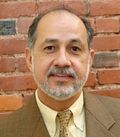Le preguntaron: "¿Quién es el hombre que te dijo: 'Toma tu camilla y anda'?"
(John 5:12)
Pero el que había sido sanado no sabía quién era, porque Jesús, sin que se dieran cuenta, se había apartado de la multitud que estaba en aquel lugar.
(John 5:13)
Después de esto Jesús lo halló en el templo y le dijo: "Mira, has sido sanado; no peques más, para que no te suceda algo peor."
(John 5:14)
El hombre se fue, y dijo a los Judíos que Jesús era el que lo había sanado.
A causa de esto los Judíos perseguían a Jesús, porque hacía estas cosas en el día de reposo.
(John 5:16)
Pero Jesús les respondió: "Hasta ahora Mi Padre trabaja, y Yo también trabajo."
(John 5:17)
Entonces, por esta causa, los Judíos aún más procuraban matar a Jesús, porque no sólo violaba el día de reposo, sino que también llamaba a Dios Su propio Padre, haciéndose igual a Dios.
(John 5:18)
Other publications related to "John 5:15":
John 5:15 - Cross Reference
El respondió: "El hombre que se llama Jesús hizo barro, lo untó sobre mis ojos y me dijo: 'Ve al estanque de Siloé y lávate.' Así que fui, me lavé y recibí la vista."
(John 9:11)
Pero él, en cuanto salió comenzó a proclamarlo abiertamente y a divulgar el hecho, a tal punto que Jesús ya no podía entrar públicamente en ninguna ciudad, sino que se quedaba fuera en lugares despoblados; y venían a El de todas partes.
(Mark 1:45)
Entonces él les contestó: "Si es pecador, no lo sé; una cosa sé: que yo era ciego y ahora veo."
(John 9:25)
Vengan, vean a un hombre que me ha dicho todo lo que yo he hecho. ¿No será éste el Cristo (el Mesías)?"
(John 4:29)
Ellos le respondieron: "Tú naciste enteramente en pecados, ¿y tú nos enseñas a nosotros?" Y lo echaron fuera.
(John 9:34)
Este es el testimonio de Juan, cuando los Judíos enviaron sacerdotes y Levitas de Jerusalén (Ciudad de Paz) a preguntarle: "¿Quién eres tú?"
(John 1:19)
El hombre les respondió: "Pues en esto hay algo asombroso, que ustedes no sepan de dónde es, y sin embargo, a mí me abrió los ojos.
(John 9:30)
Le preguntaron: "¿Quién es el hombre que te dijo: 'Toma tu camilla y anda'?"
(John 5:12)
Por eso los Fariseos volvieron también a preguntarle cómo había recibido la vista. Y él les dijo: "Me puso barro sobre los ojos, y me lavé y veo."
(John 9:15)
